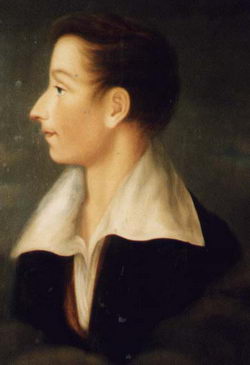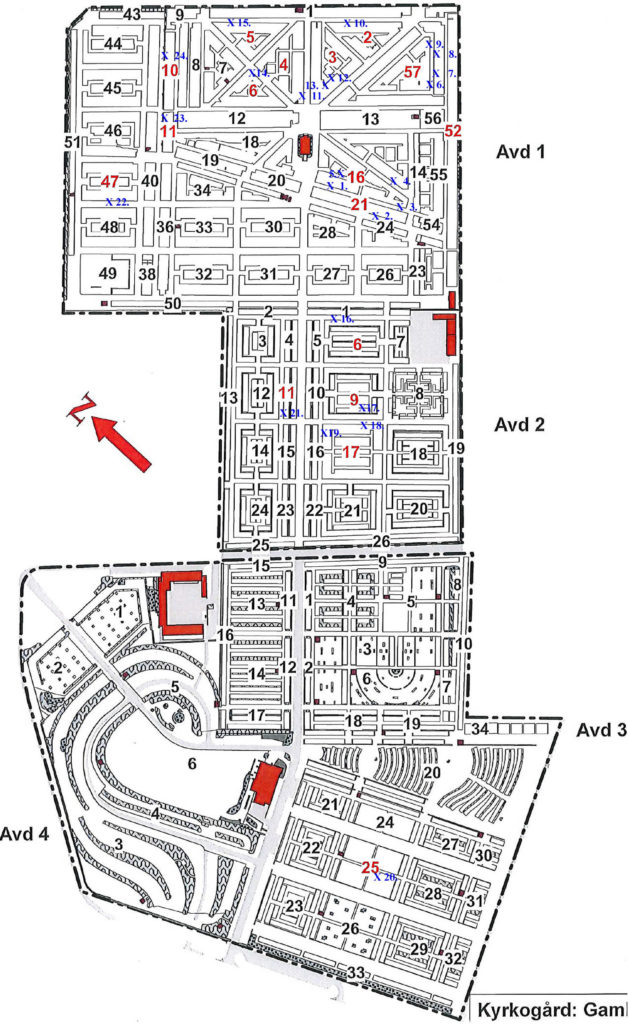Uplands nation
The history of Uplands
The beginning of the Nations
Uppsala’s student nations started forming during the first half of the 17th century, after the University was reestablished in 1595. In the beginning, there were a lot more Nations than there are today. What we know as Uplands Nation today, originally was three different Nations: Roslags Nation, Fjärdhundra Nation and Uplands Nation. These three represented different parts of the region of Uppland. 1642 is counted as the year that Uplands Nation was founded. The two other Nations of the Uppland region were also founded around this time.
From the beginning, the university was not that fond of the Nations. However, in 1663 the Konsistoriet decided to appoint Inspectors at the Nations to supervise the students activities and studies. The Nations were through that put under the watchful eye of the university and membership became mandatory for all students.
The nations were thus institutionalized into Uppsala’s academic sphere, permanently as it would turn out, and nation membership was made obligatory for all students. Nation membership at this time was, as the term implies, based on the home province or city of every student. The fellow members of a given nation therefore came to be called ”landsmän”, meaning countrymen or compatriots.
The Nations educate
During the 17th and 18th centuries the nations had no permanent residences, and instead moved from place to place according to what current needs required and funds permitted. Often the meeting place was the home of the Inspector. The national property and funds were kept and moved around in a chest called a fiscus. Fisci from all the three Upplandian nations are still kept at Upland’s Nation, and are displayed in the small rooms.
During this period the nations dedicated large efforts to, besides organizing festivities, encourage and facilitate their countrymens’ education. Rhetorical exercises and dissertations were held, and nation libraries were founded and expanded. There was a general patronage of younger countrymen by their elders. The formal membership division into seniors, juniors and recentiors (or novices) is very old, and for a long time these groups held different and unequal privileges; the seniors had a disproportional influence over the nations’ management, while the recentiors lacked the right to vote. Originally, not only seniors (a tradition still upheld, albeit with a more ceremonial significance) but also juniors were elected by the Landskap, the nations’ ruling general assemblies.
Uppland's or Upland's Nation?
The early 19th century was an era of change for Upland’s Nation. Falling membership numbers were one of the causes for the aforementioned mergers with the other two Upplandian nations. After 1829 the new, united nation is called ”Uplands-Roslags nation” up until the 1840’s, when the second part of the name is dropped. The spelling of the name then shifted between Upland’s and Uppland’s until the beginning of the 1990’s, when the Landskap finally (?) decided upon the former variant. Another milestone was passed in 1825 when, as many other nations also did at the time, Upland’s acquired its own building on S:t Larsgatan.
The 19th century was also the golden age of Nordic student romanticism, of which Uppsala was one of the foremost centers. Here Gunnar Wennerberg wrote his famous song collection Gluntarne, and punch drinking, cigarr smoking, coattail wearing students held serenades beneath ladies’ windows or participated in choirs like Allmänna Sången. The national-romantic movement Scandinavism was in large part a semi-revolutionary liberal student movement, and several international meetings were held for the fraternization of the “brother peoples” of the Nordic countries. Somewhat ironically, one of the few lasting results of these ambitious meetings was that the now traditional student cap was adopted by students in all the Nordic countries, with its original purpose as a symbol of unity largely forgotten.
In 1893, twenty years after the universities of Sweden had been opened to women, the first female student became a countryman of Upland’s nation. In the 1920’s the nation got its first female Club Master, and in 1959 the first woman, Marianne Johnsson, was elected First Curator. It wasn’t until 1999 though that the nation elected a female Inspector, Karin Dahlgren Caldwell, who held the post until 2009.
Post-war education boom
During the 20th century the number of students at Uppsala University rose dramatically. Higher education was greatly expanded in all of Sweden at this time, especially during the post-war decades. This meant big changes for Upland’s. Previously, it wasn’t unusual for a nation member to personally know or at least have met all other currently studying countrymen. The social cohesion of the countrymen and their ties to their nation were thus stronger, even among the generations who had already left the student life.
Today, the average fellow countryman is more anonymous, and only a small minority of them engage in the nation’s activities. An instructive example of this development is that presence at the Landskap used to be obligatory, while today’s Landskap is held in a locale that couldn’t even fit all of Upland’s countrymen.
Student radicalism returned in the 1960’s, and an attempt was made at reorganizing Upland’s towards a system of indirect democracy with an assembly of elected delegates. The reform did not work out well, so the Landskap with its system of direct voting by the countrymen present was reinstated in 1972.
The commercial activities of most nations were developed throughout this time, with Upland’s hosting large pubs and clubs in the nation building. This new business brought with it a greater focus on two things; attracting all students of Uppsala, not only countrymen, as well as a drive towards making activities profitable in themselves to finance the nation (with its expenditures like maintenance of the building), partly replacing the old system where the nation’s countrymen financed its activities.
The Nation building
The student nations of Uppsala started to acquire their own buildings during the 19th century, after an initial era of itinerancy. The first nation to settle down was Östgöta Nation, who in the 1810’s rented the conservatory at the Linnaeus Garden.
Around that time, Upland’s nation was also looking for a permanent home, and in 1821 a lot was purchased in the Luten quarter with the intentions of building a house. The plans soon changed though, and instead the neighbour Strandman Manor was bought in 1825. The papers were signed in the 15th of June in that year, and the price was 7666 riksdaler and 32 skilling banco. The discarded lot was sold to Västmanlands-Dala Nation to a profit of 100 riksdaler, where the V-Dalings later had a disreputable parking house built.
Upland’s nation building was thus not built as such, but has a long history before us. The oldest part, a two-story stone house in the intersection of S:t Larsgatan and S:t Johannesgatan, was built sometime before 1770. In the 1790’s it was owned by G.A. Silfverstolpe, a prominent member of the radical student club Juntan which had taken inspiration from the French revolution; a “miniature Jacobin Club”. Some of its other members were Hans Järta, Gustaf af Wetterstedt and Marcus Wallenberg.
In 1809 the whole Fjärdingen part of Uppsala was ravaged by fire, including the (soon-to-be) nation lot. But the old stone walls survived the fire, and when master craftsman Peter Strandman acquired the lot they could be reused for the new house he had built – the house that Upland’s Nation bought in 1825!
The oldest parts of Upland’s include the small rooms upstairs, and Silfverstolpska rummet with its surrounding rooms where the Juntan club reportedly held its meetings. Later on this space served a number of uses, for instance as quarters for the building’s caretaker, before being remodelled in its current fashion.
In the early days, the grand hall was basically what was used, while some of the other rooms were even rented out to other nations. In the early 1830’s the hall was expanded and its roof raised, giving the building exterior its modern shape and the hall its modern proportions (with the exception of the Apse, which was walled off). The new grand hall was a popular venue, not only among Upland’s members.
The building has since been subject to several renovations and reconstructions, for instance in 1871 and in 1901. The biggest change has been the addition of the residential wing, designed by Sten Hummel-Gumaelius, in the beginning of the 1950’s. In the 1990’s the kitchen and the pub, Svantes källare, were renovated, while new ventilation has been installed in the building. Many plans have also been made but never come to fruition. For a while the nation had hopes of acquiring Akademikvarnen, which currently houses Upplandsmuseet.
Svante Wijkman
Svante Wijkman, or Sven Johan which was his real name, had a tragically short life but lives on through many myths and legends at Upland’s nation. He was the son of district judge Stefan Johan Wijkman, who died in 1834, and his wife Märta Gustava (born Söderström). In 1830 Svante is enrolled at the gymnasium Katedralskolan in Uppsala, where he studies with some success. In July of 1837 he passes from an unknown disease, recorded as “a fever”.
Nothing suggests Svante was ever a member of or active at Upland’s nation. Still, after his death his mother gifts to Upland’s a posthumous portrait of Svante, which remains at the nation. Märta Gustava also establishes scholarships to her son’s memory, both at Katedralskolan and at Upland’s. Perhaps these deeds symbolize her lost hopes of her son’s future, or perhaps their cause was an acquaintance with the nation’s Inspector.
Regardless, Svante has long since his death remained a fixture of Upland’s countrymen’s collective consciousness. His portrait hangs in a room that bears his name, Wijkmanska rummet, and is a cause for much speculation. Several myths give (doubtful) detail to his life and death. He has been made member of an orchestra called Turkiska Musiken, and some claim that his death was a result of voracious partying at the nation.
Other myths claim to tell of his later activities at the nation since Svante is regarded as the household ghost of Upland’s Nation, and many people can recount mysterious night-time experiences in the nation building.
Svante’s name is also used frequently in other contexts; the aforementioned Wijkmanska rummet, the nation orchestra Wijkmanska Blecket and the nation pub Svantes källare.
(this section is based on the article Svante Wijkman – myter och livsöde by Bengt Erik Rydén that is published in Uplands nation’s jubilee publication Studenten, staden och sanningen from 1992)

The Nation Grave
Down below is a map over Gamla kyrkogården in Uppsala. The graves of important nation are marked out in red. Information about these nation members has been compiled by the nation’s archivist Patrik Spånning Westerlund and is available here.
